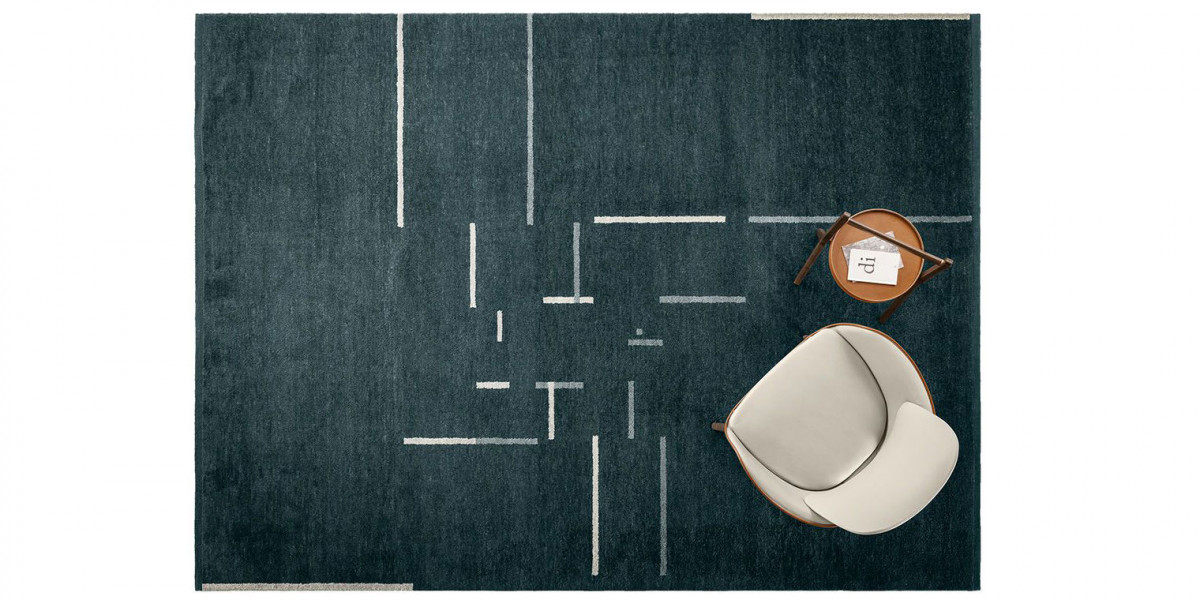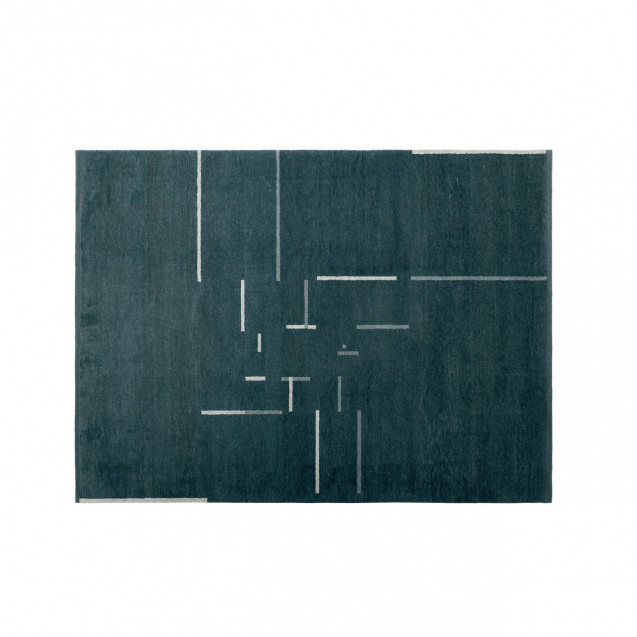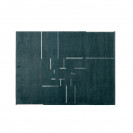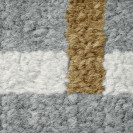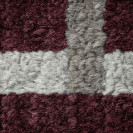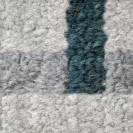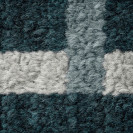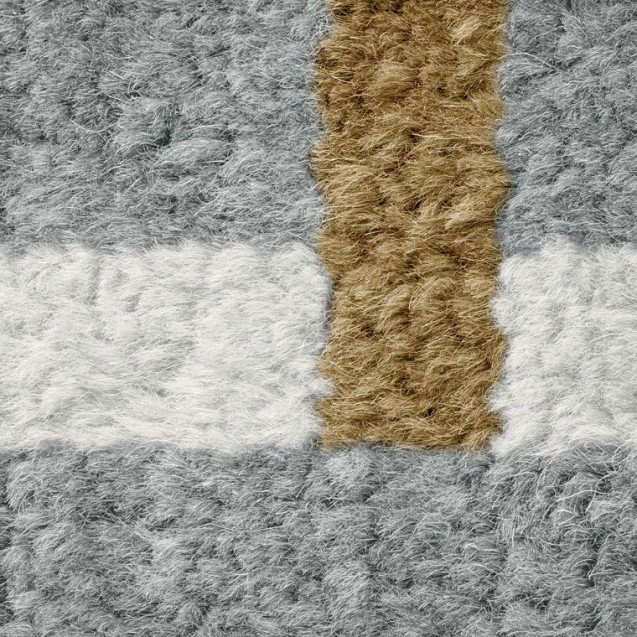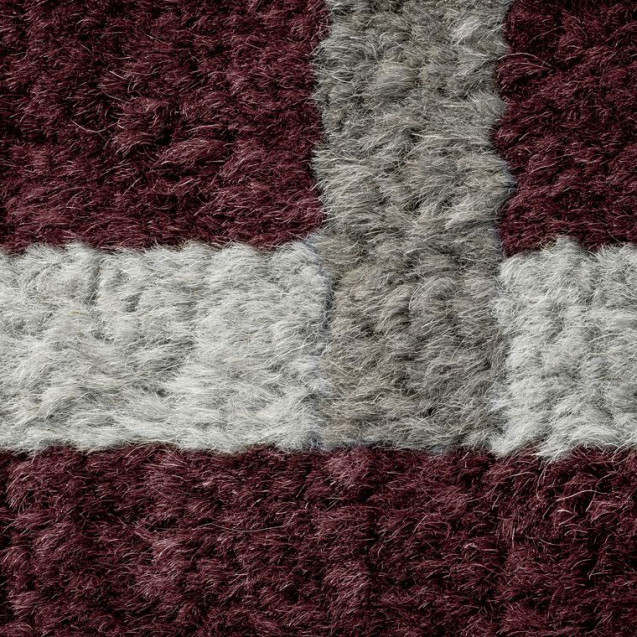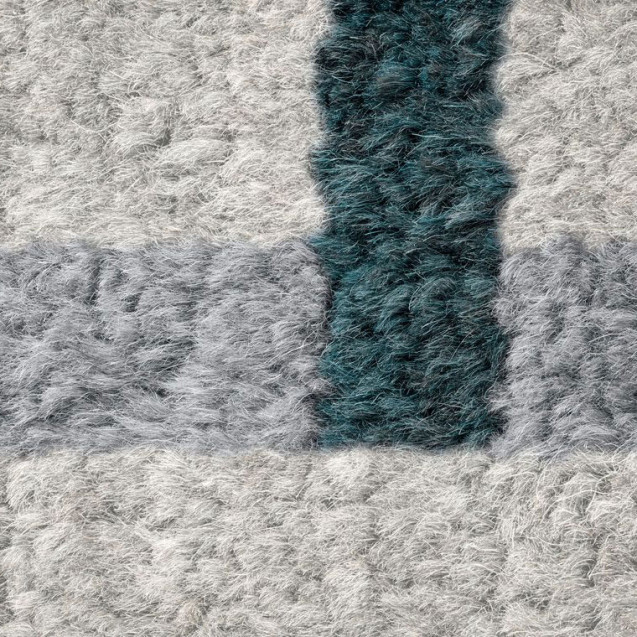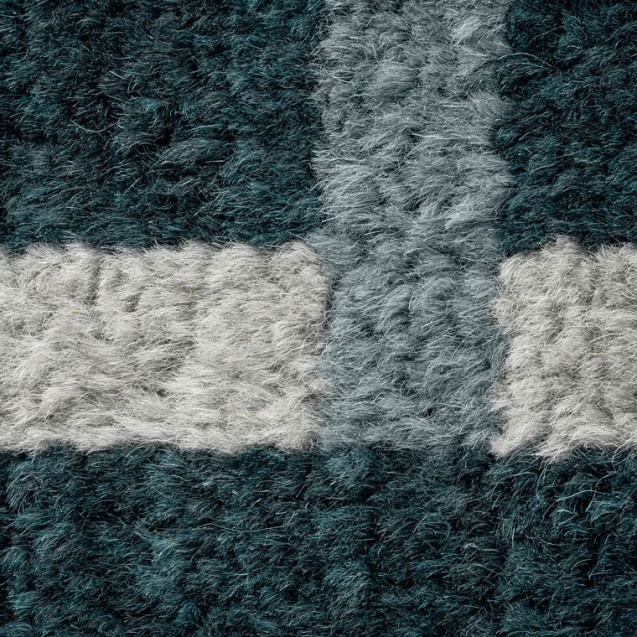Dizzy
To mark the hundredth anniversary of the birth of Max Huber, Poltrona Frau pays homage to the famous Swiss artist and graphic designer with Billie and Dizzy, a collection of rugs based on drawings of two unproduced works taken from the archive and dating respectively to 1936 and 1947.
The original designs have remained unchanged in terms of their proportions and the thickness of their lines and have simply been adapted to the dimensions of the rugs.
The Dizzy rug is based on a design which stands out for its series of cadenced lines, its rhythm bringing to mind Dizzy Gillespie, one of the inventors of bebop and modern jazz. A tribute to a genre of music much loved by the artist and a passion that influenced his work.
Dizzy has a motif formed of small broken lines in two different colours positioned both horizontally and vertically. The strokes originate at the centre of the rug and form a radial effect stretching towards the external edge, gradually becoming longer and thinner. The design is based on a musical score and therefore suitable for being presented in different variants and dimensions. The rugs in the Dizzy collection come in two sizes: 200X300 cm and 250X350 cm, and four very stylish shades, two dark: Blue Green, Deep Red and two light: White Sand and Light Gray.
The Dizzy rug is entirely handmade on wooden looms using the Persian knot technique and has a density of around 50,000 knots per m2 with a long pile. The selection of raw materials is essential in making the surface soft, resistant but also glossy. Only top-quality 100% natural carded and hand-spun wool is used. It is for this reason that the colours are not absorbed in a perfectly uniform way, giving the dyes unique degrees of intensity. Dizzy has a 4 cm-high edge produced using the Kilim technique and made from wool on the two shorter sides, in the same colour as the background of the rug.
The collection is distinctive for the saddle-leather label hand-sewn on the back of the rugs and stamped with the Poltrona Frau logo. To keep the corners rigid, two strips of fabric are sewn onto the back of the rug and embroidered with Max Huber’s signature.
| About Designer | |
|---|---|
Max Huber |
Max Huber was born in Baar, in the canton of Zug, in 1919 and after attending middle school he studied graphics at the Kunstgewerbeschule in Zurich, where he followed the lessons of Alfred Willimann with particular enthusiasm. During this period he made the acquaintance of numerous Swiss graphic designers and artists including Werner Bischof, Emil Schulthess, Josef Müller-Brockmann, Carlo Vivarelli, Hans Falk, Hans Neuburg and Max Bill. Eager to embark on a new experience, in 1940 Max Huber found work at the prestigious graphic design studio of Antonio Boggeri in Milan, where he met Bruno Munari, Luigi Veronesi and Albe Steiner. He returned to Switzerland just one year later due to the difficult political climate. Max Bill subsequently invited him to join Allianz, the association of modern Swiss artists that formed part of the “concrete art” school and whose other members included Hans Arp and Richard Paul Lohse. In October 1945 he returned to Milan and together with Albe Steiner created the graphic design project for the VIII Triennale of 1947. In this period he met Giulio Einaudi who made him creative director of his publishing house. The same year he designed the graphics project and the little catalogue for the Abstract and Concrete Art exhibition curated by Max Bill with Lanfranco Bombelli Tiravanti at the prestigious Palazzo Reale in Milan. In 1949, still in the capital of Lombardy, he joined the Concrete Art Movement founded the previous year by Gillo Dorfles, Gianni Monnet, Bruno Munari and Atanasio Soldati and took part in the IV “cartella grafica”. Later, from the 1950s onwards, he distinguished himself in the graphic design sector. Examples of his work include the corporate identities of La Rinascente, Coin, Nava and supermarket chain Esselunga, as well as installations for the Omega and Flos showrooms in Milan. At this time he also began a prolific collaboration with architects/designers Achille and Pier Giacomo Castiglioni, sharing, with his archigraphic project, his ideas for numerous installations for Rai, Eni and Montecatini (later Montedison). Public acclaim would soon follow and in 1954 Max Huber was awarded the Italian “Compasso d’Oro” design prize for his design for a “plastic fabric”. Not to be overlooked is his long and continuous teaching career which he began in Milan at the Rinascita school in 1947, continued between 1959 and 1962 at the Umanitaria, and resumed once more in the 1970s at the Scuola Politecnica di Design directed by Bruno Munari with Nino Di Salvatore. Between 1978 and 1984 Max Huber took his teaching experience to Switzerland, teaching graphic design at the CSIA-Centro Scolastico Industrie Artistiche in Lugano. He died on 16 November 1992. |
